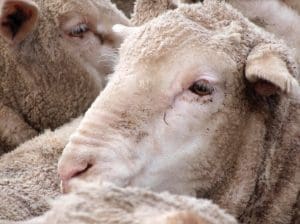 A NEW report detailing performance data from 73 Merino bloodlines will give a reliable indication of potential bloodline profitability, according to the New South Wales Department of Primary Industries.
A NEW report detailing performance data from 73 Merino bloodlines will give a reliable indication of potential bloodline profitability, according to the New South Wales Department of Primary Industries.
NSW Department of Primary Industries development officer, Kathryn Egerton-Warburton, said Merino Bloodline Performance 2007-2018 delivers genetic data producers can use to inform their choice of rams.
“Analysis of nine individual traits and four financial indicators from 24 wether trials in NSW and one in Tasmania compared performance across bloodlines to show significant variation between the lines.
“There was a strong relationship between fleece weight and fibre diameter across bloodlines, with a significant genetic variation across the fibre diameter range,” Dr Egerton-Warburton said.
“This genetic variation offers two key options to fit breeding objectives – producers can choose a finer bloodline to reduce fibre diameter without compromising clean fleece weight or choose a bloodline with a heavier fleece weight and maintain their current fibre diameter.”
Merino bloodlines varied across a range of 3.6 microns in fibre diameter, 28 percent in clean fleece weight and 13 per cent in live weight with production differences translating into very significant differences in bloodline profitability.
Merino breeders and commercial wool producers can use the report to identify the relative performance of bloodlines and fine-tune their breeding programs.
Determinants of profitability, including diameter, fleece weight, live weight, staple length and strength, style and colour, and measures of financial performance allow producers to compare bloodlines on a profit per head or per dry sheep equivalent (DSE) basis.
Dr Egerton-Warburton said Merino producers can confidently use the data in selecting bloodlines which best suit their breeding objectives.
“The trials have each run from two to three years and we are confident the information gives a very reliable indication of potential Merino profitability,” she said.
“Genetic data has been isolated from seasonal and geographic environmental differences by grouping multiple teams of wethers into bloodlines across the trial sites.”
NSW wether trials were run in the Central Tablelands, Central West, Northern Tablelands, Riverina, Southern Tablelands and the Monaro.
Australian Wool Innovation and NSW DPI funded the Merino Bloodline Performance project and its report, which is available online, www.merinobloodlines.com.au
Source: NSW DPI.

HAVE YOUR SAY